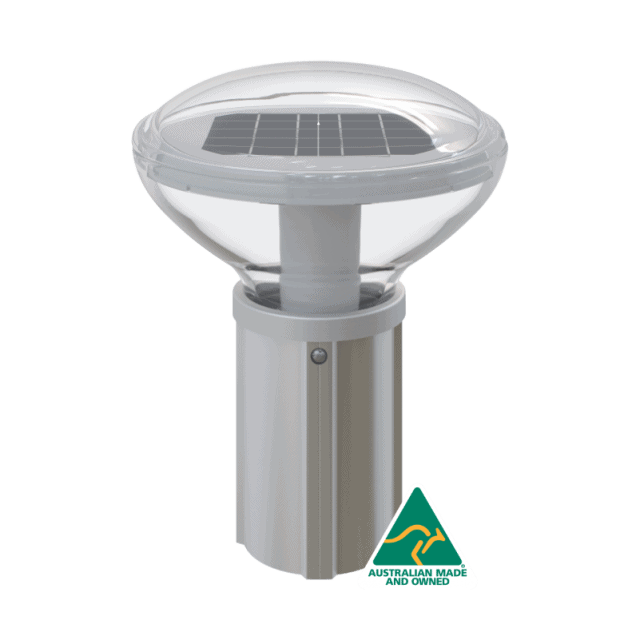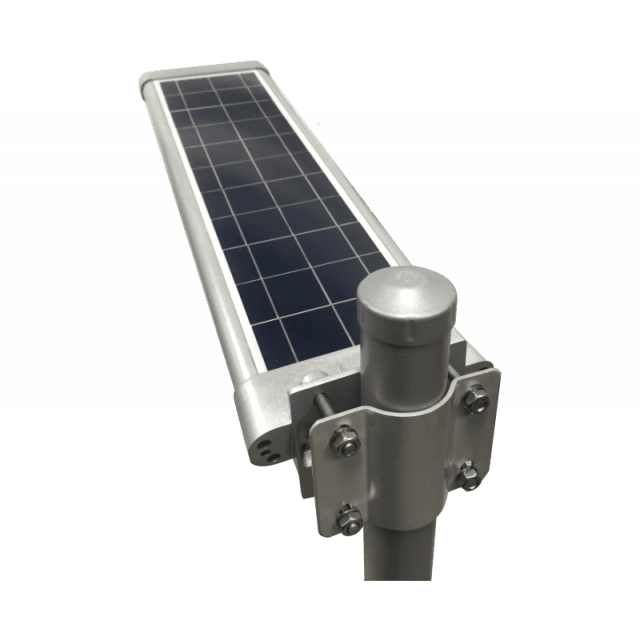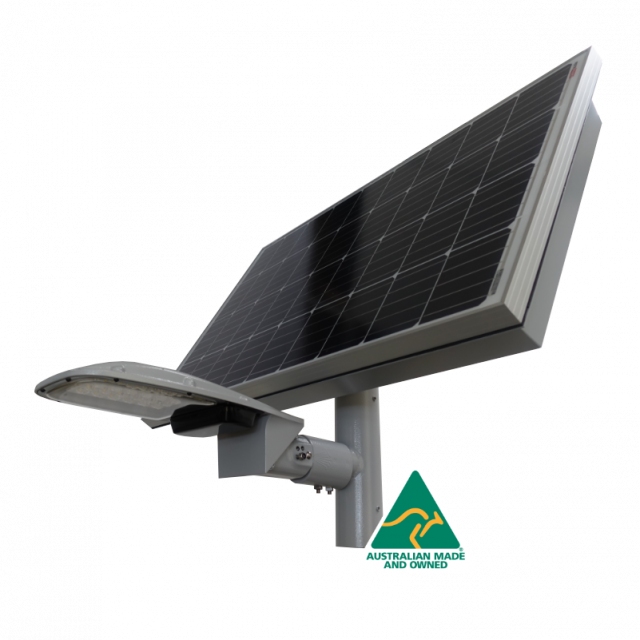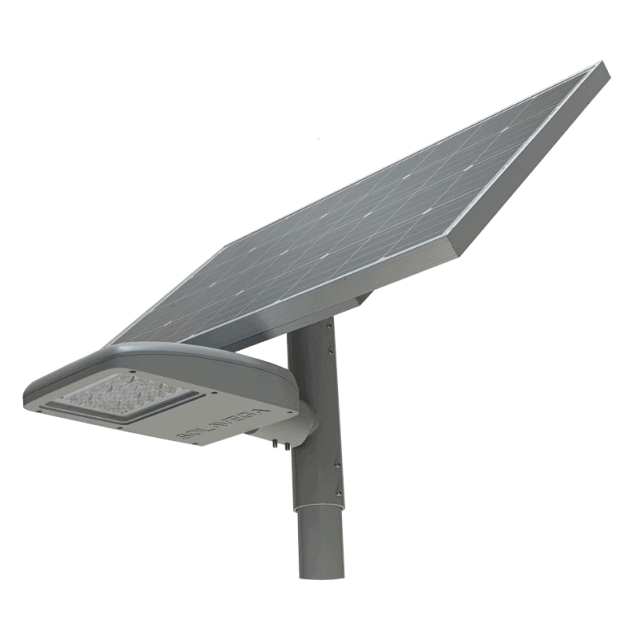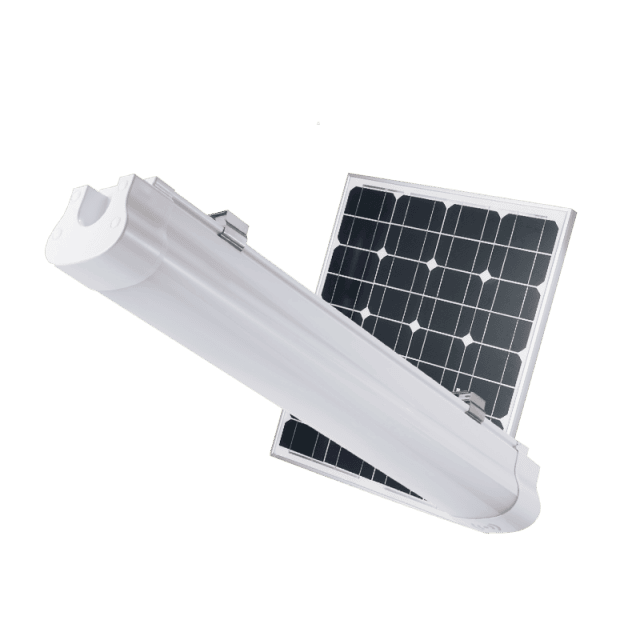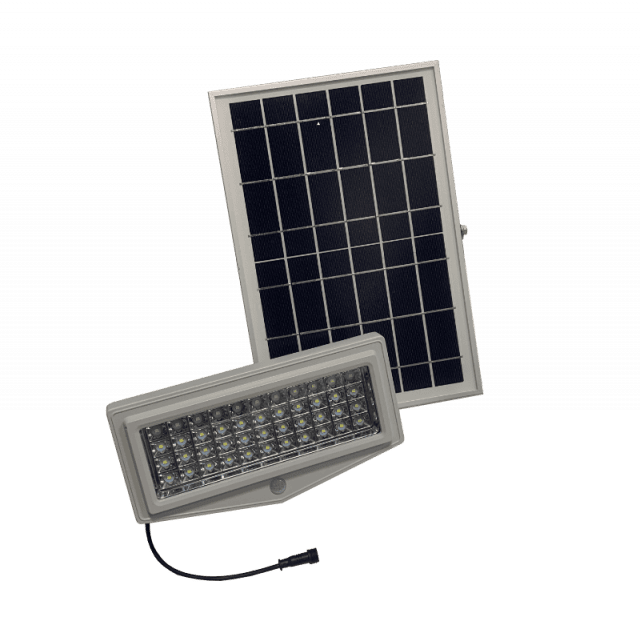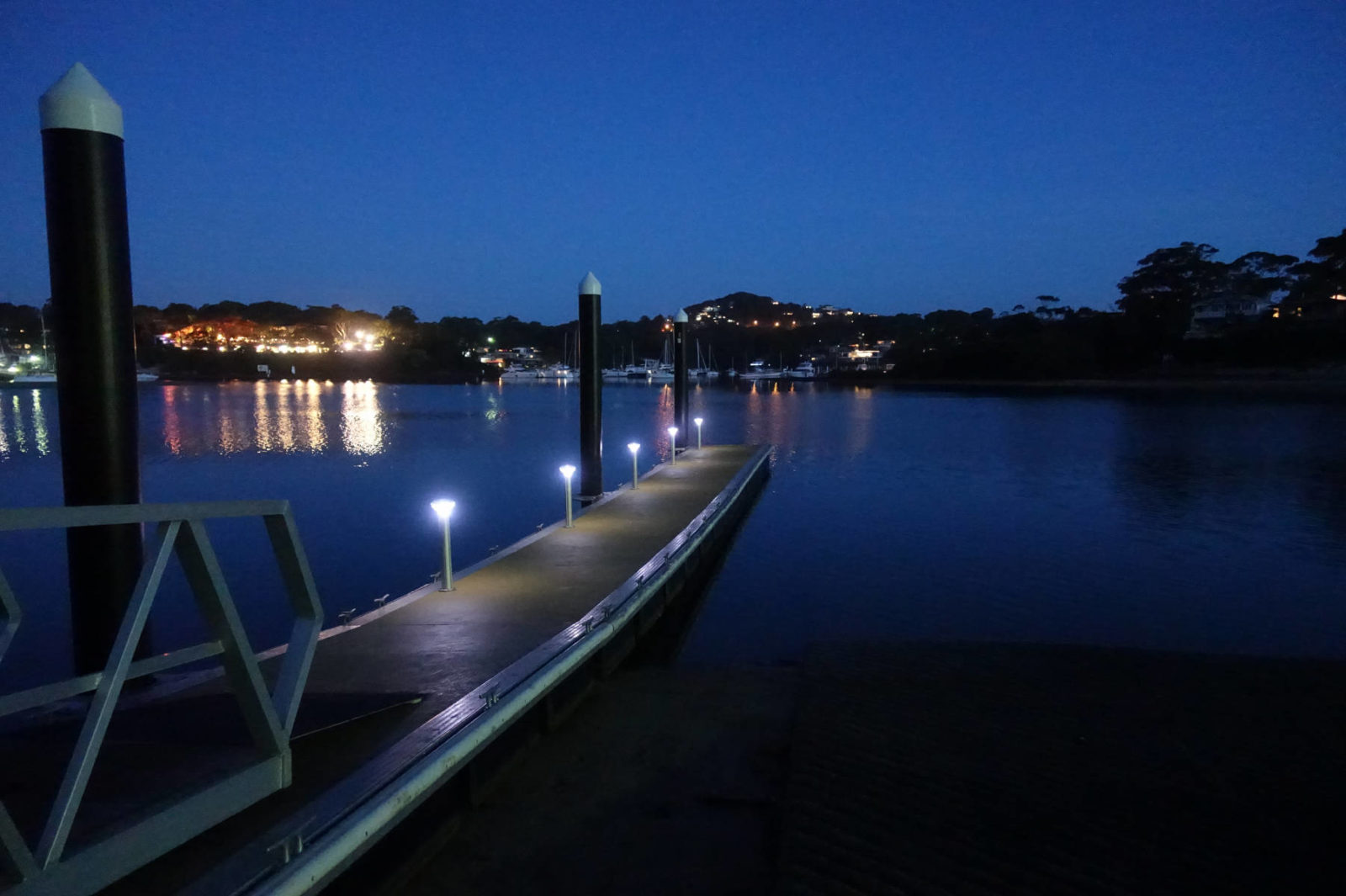
Get the solar bollard you want [and need]: Here’s how
Your solar bollard is "made-to-order" to achieve the objective: right solar in the right position. There are three decisions you'll need to make to be a solar bollard hero!
1. How will the solar bollard be installed?
2. Which generation of solar bollard do you need, SBL1 or SBL2?
3. Will the solar bollard get full sun in winter?
Decision 1: How will the solar bollard be installed?
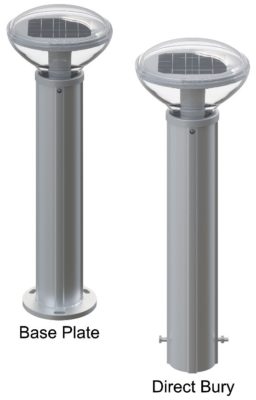
Two options:
- Direct Bury (DB), where a hole is dug into the ground and the bollard is inserted about 30cm (with cement). Read more about installing the solar bollards here.
- Base Plate (BP), where the bollard will be attached to an existing structure such as a path, jetty, or walkway. The base plate installation pole is ~$50 more expensive than the direct bury pole because of the welding needed to the aluminium pole.
Read more about installing the solar bollards here.
Decision 2: Which Generation of solar bollard, SBL1 or SBL2?
There are two generations of solar bollard, SOLABOLLARD Generation 1 (SBL1), and SOLABOLLARD Generation 2 (SBL2).
It is primarily the LED arrangement that sets the two Generations apart, each designed to achieve the two most common lighting tasks – waypoint lighting (SBL1) and, compliance lighting (SBL2).
The LED arrangement of the SBL2 is specifically designed to offer a cost-effective solution to meeting AS/NZS Cat P4 standards (compliance lighting). If the project does not require compliance with lighting standards, the SBL2 may still be the better-performing of the two generations if the bollards will be installed under shade from trees & shrubs or buildings, or, if the area is prone to flooding. The SBL2 is about $200 more expensive than the SBL1.
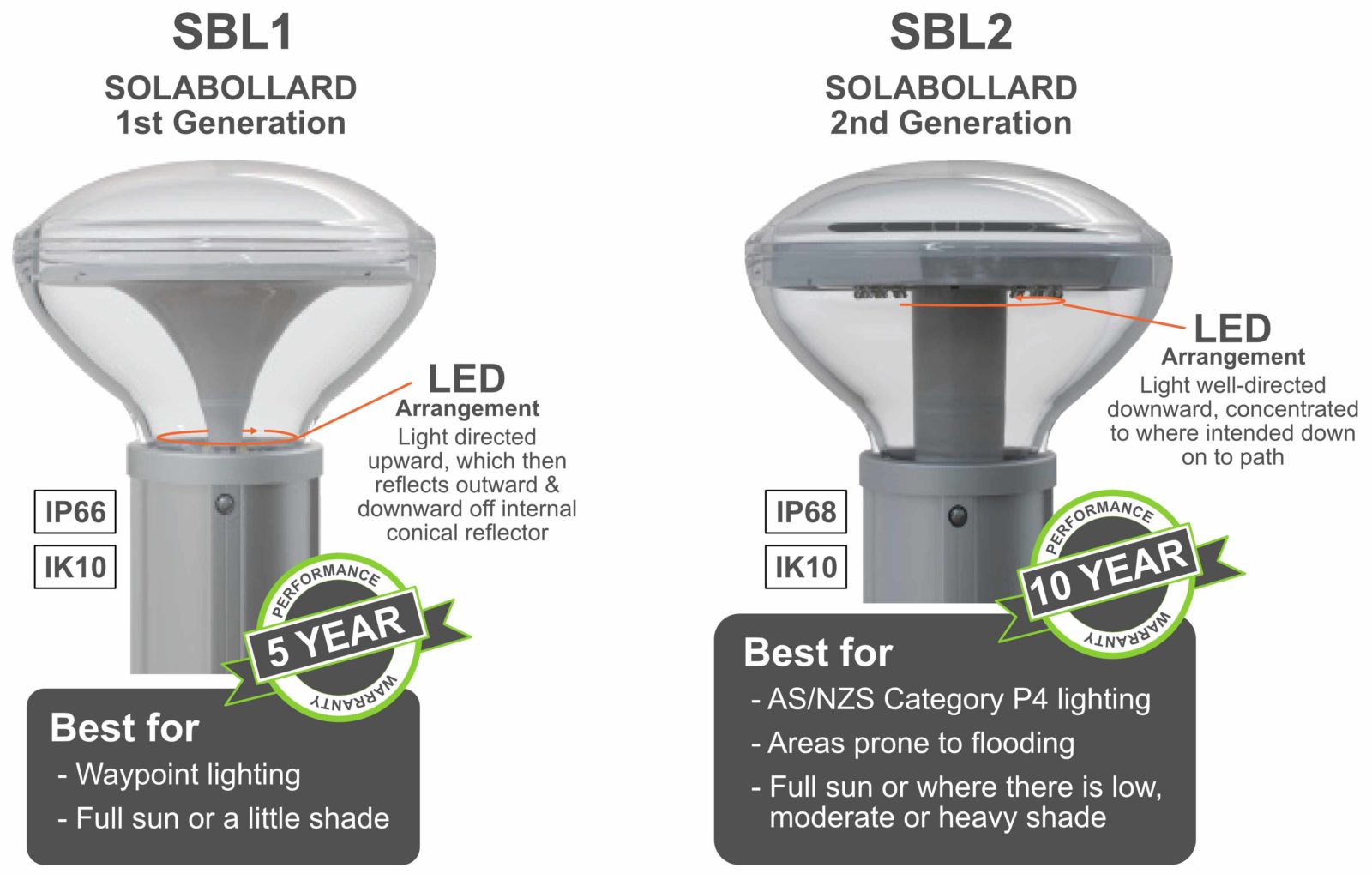
Read a more detailed description of the differences between SBL1 & SBL2 here.
Decision 3: Will the solar bollard get full sun in winter?
The key to effective solar is to match the amount of energy in from the sun, with the amount of energy going out as light. SOLABOLLARD is designed to run all night, every night, at full power. So, it makes sense to “turn the power down” by choosing a lower power model in places where the energy coming in is also low. The best way to work out which power model of bollard is needed to match energy in to energy out, is to consider the sun’s path in the winter months to each planned installation point.
Put simply, ask: how many hours of full sun is the head of the solar bollard going to get in winter [in that position]?
A reason the SOLABOLLARD can operate reliably in Australia’s long winter nights, and, with shade, is because we can offer the SBL2 with its range of power models to suit the exact location of where you are wanting to install each solar bollard. This is one of the reasons we ask for an exact street address when you are buying the SOLABOLLARD, so we can see the position of the bollard, relative to the sun’s path, and, relative to latitude.
With our guidance, we can get you the right power model for the location and protect your warranty! The warranty is void if SOLABOLLARD is installed in a position it is not designed for.
As a general rule, the top half of Australia (northern states) can choose the higher power models of solar bollard (160, 180, 200 & 240mA). However, if the exact position of installation of the solar bollard, even in the northern parts, is shaded by trees or buildings in winter (dry season), a lower power model will be needed (160 or 120mA). Whereas, in the Southern parts of Australia, a standard power model (160mA) would likely be the highest power model we might recommend (based on latitude only), then, if there is also shade over the bollard head during winter, an even lower power model would be needed (say, 120, 80, or even ultra low at 40Ma).
